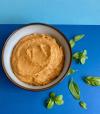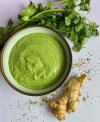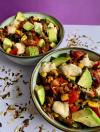
Healthy snacks can be included as part of a balanced diet and are sometimes needed to help meet daily nutritional requirements. However it is important to reflect on snacking habits and whether they are driven by:
- True hunger
- Emotions such as boredom, stress, happiness or sadness
- Peer pressure
- Physical sensations such as thirst or fatigue
Eating snacks when you’re not physically hungry can lead to unwanted weight gain or weight stalls, particularly if those snacks are higher in calories, saturated fats, and free sugars. See the examples below to work out whether you are feeling phsyically hungry or emotionally hungry:
Physical hunger
- Comes on gradually and is associated with physical symptoms such as a feeling of an empty or grumbling stomach, fatigue or irritability especially if it has been 4-5 hours since you last ate
- Is not associated with your mental or emotional state
- Isn’t selective of specific foods
- Is resolved after eating a moderate portion (relative to your stage post-surgery)
- Is often followed by feelings of contentment and satisfaction
Emotional hunger
- Can come on suddenly and occurs without physical symptoms
- Is often associated with feelings of stress, frustration, loneliness, sadness, depression
- Tends to involve a specific food, often one that is sweet, salty or crunchy
- Doesn’t tend to be resolved after eating a moderate portion
- Is often followed by feelings of guilt, shame or negative self talk
Peer pressure
Eating is a very social activity and it doesn’t take much to feel alienated if you choose not to participate in social eating event such as a birthday morning tea. The classic lines of “go on, one slice won’t hurt you”, “you’ll offend such and such if you don’t have any” and “just try a little bit” can make it challenging to stick to your guns, but at the end of the day, as an adult you are in control and responsible for the food choices you make. Instead try changing tact and use some of the following strategies to get around any peer pressure you may be faced with:
- Bring something along to share that also aligns with your needs
- Pick foods on offer that will offer some protein, fibre and minimal free sugars
- Have a drink in hand instead
- Take the focus away from food and get a game started
Thirst
Often the first thing people want when they walk in the door after a long day at work is something to eat, but what the body is actually screaming out for is hydration! Next time you think you may be in need of a snack, try having a drink first. If after 30 minutes you are still looking for food, it may be physical hunger, but often those initial desires to snack are resolved by a tall glass of water or cup of tea.
Fatigue
Fatigue can increase the desire to snack, but it doesn’t have to mean that this is a given. If you’re feeling fatigued whether that is from physical exhaustion, mental fatigue or simply a lack of sleep, try some of the following strategies to create a bit of space instead and see how you feel afterwards:
- Do a short meditation using apps like ‘Calm’, ‘Headspace’ or ‘Buddhify’
- Read a book for 20-30 minutes
- Have a hot bath or shower
- Do 10-15 minutes of stretching
- Try a restorative yoga class
What to snack on
There are loads of snacks which don’t come with any packaging such as fruits and vegetables, however if you do need to navigate a packaged snack, opt for something which contains mostly whole food ingredient and minimal additives (less codes, numbers and ingredients you can’t pronounce!). It’s also important to read the nutrition information panel carefully. Ideally you want snacks that have:
- <2g saturated fat per 100g
- <10g sugar per 100g
- <400mg sodium per 100g
- At least 3g fibre per serve
When label reading it is important to consider the quality of the food overall, not just the numbers e.g. olive oil is high in calories and rich in monounsaturated fat however it is a great food to include in the diet and is loaded with antioxidants and anti-inflammatory properties. As with many things in life, moderation is always key however.
To ensure you feel satisfied from snacks and last until your next main meal, consider whether your snack choice contains protein as well. Think meat, fish, chicken, eggs, dairy, legumes, soy, nuts and seeds.
My top 10 list of nutritious snacks:
- 1-2 wholegrain crackers with 1tbsp peanut butter
- 180ml pot of high protein yoghurt
- 1x small piece of fruit with 20-30g (approximately 1/4 cup) unsalted, raw or dry roasted nuts
- 1x 95g tin of tuna (option to mix in some diced tomato, red onion and cucumber)
- 5x cucumber slices topped with a tsp of smoked salmon and smear of lite Philly cream cheese
- 1x handful of edamame beans (option to add a squeeze of lime and some chilli flakes)
- 1/4 cup roasted chickpeas
- 1x plain rice cake with 1tbsp hummus, a few slices of chargrilled capsicum and 20g feta
- 1x hard boiled egg
- 30g Edam or Noble cheese with 5-6 grapes
Note - portion sizes will vary depending on the individual and which stage you are at post-surgery. Remember to eat mindfully and stop as soon as you begin to feel full to avoid regurgitation or discomfort.


